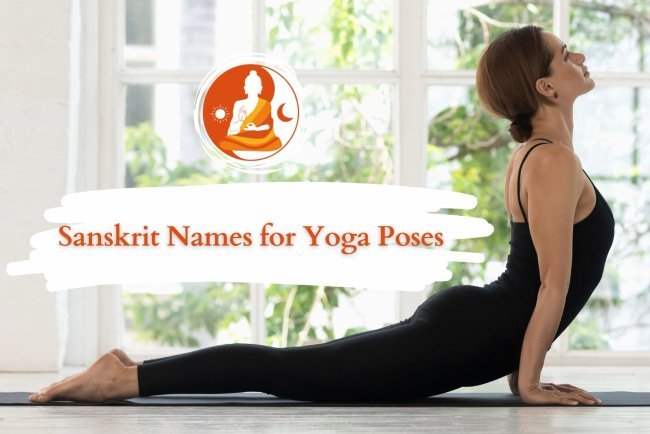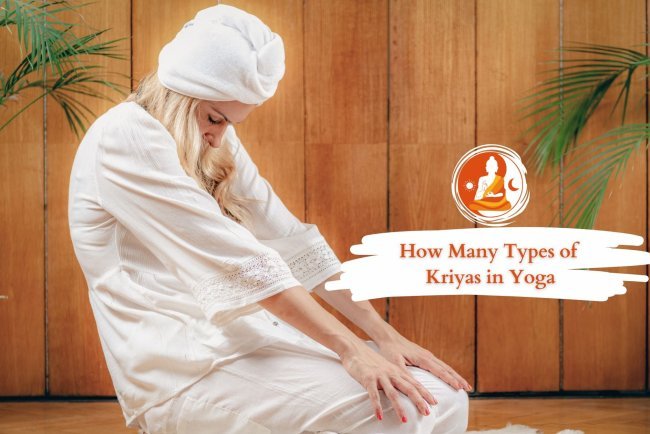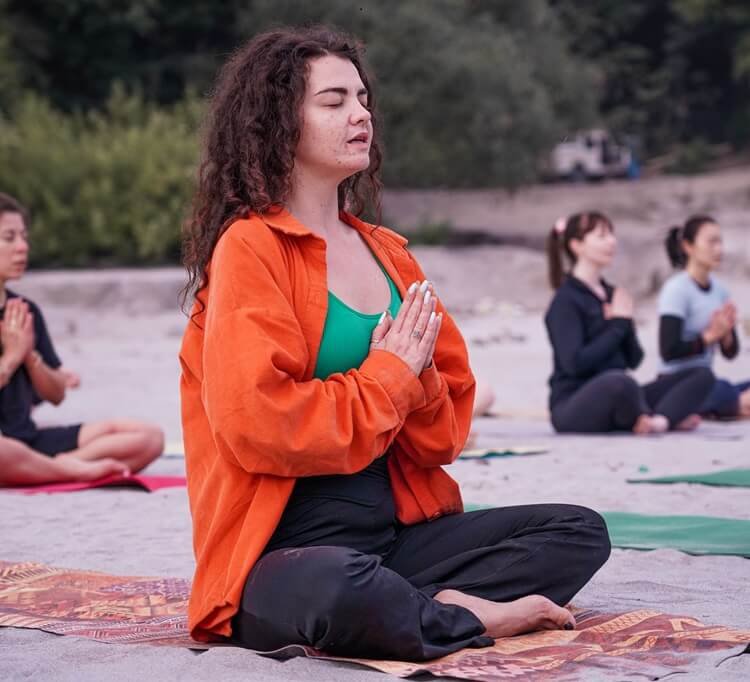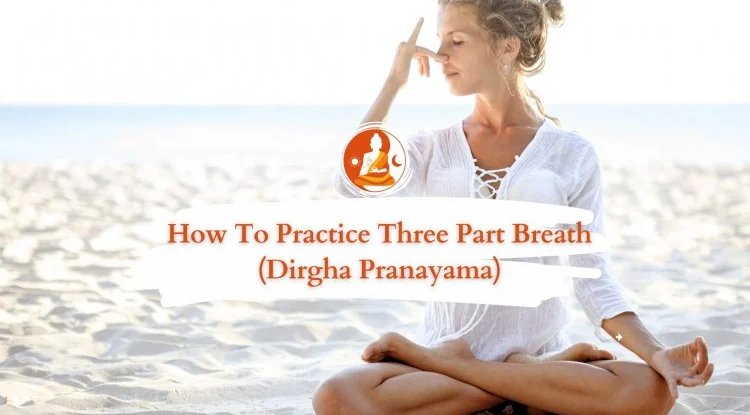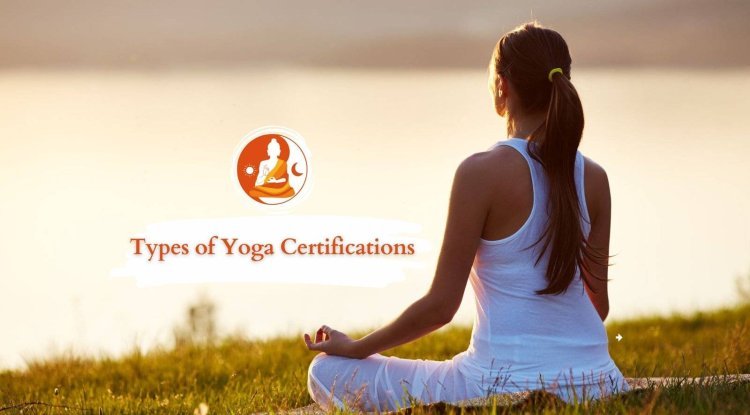Difference Between Ashtanga Vinyasa Yoga and Vinyasa Yoga

Yoga, in its various forms, offers practitioners a path to physical, mental, and spiritual wellbeing. Among the most popular styles are Ashtanga Vinyasa Yoga and Vinyasa Yoga, both dynamic, breathlinked practices rooted in ancient Indian traditions. Understanding the difference between Ashtanga Vinyasa Yoga and Vinyasa Yoga can help practitioners choose a style that aligns with their physical abilities, mental goals, and personal preferences.
Ashtanga yoga follows a more rigid structure and has a sequence that is to be kept in mind so as to go by it while performing the art. Vinyasa Yoga, on the other hand, allows more freedom and creativity, with sequences that can vary widely based on the teacher's vision and the class focus.
Despite similarities between ashtanga and vinyasa yoga, these styles have distinct approaches and structures. In this article, we’ll explore the roots, structure, benefits, and unique elements of each style to clarify how they diverge, making it easier to select the yoga practice that best suits you.
What is Ashtanga Yoga?
Ashtanga Vinyasa Yoga, often referred to simply as Ashtanga Yoga, follows a structured, repetitive sequence, focusing on consistency, discipline, and progression over time. It’s especially suited for practitioners looking to deepen their practice, focus on physical alignment, and embrace a longterm commitment to mastery.
Origins and Philosophy
Ashtanga Vinyasa Yoga was developed by K. Pattabhi Jois during the 20th centuryThe practice aligns with the eightlimbed path outlined in Patanjali’s Yoga Sutras, where “Ashtanga” means "eight limbs" in Sanskrit.
Vinyasa Yoga, often called "Flow Yoga," is a broader, more adaptable form rooted in the same traditions but without the rigid structure of Ashtanga.
The core principle of Vinyasa is “flowing” from one posture to another, syncing movement with breath. Vinyasa classes vary widely, with sequences often changing each session. This freedom allows instructors to craft sequences that meet the specific needs and energy of their class, making Vinyasa accessible and flexible.
Structure and Practice
Ashtanga Vinyasa Yoga follows a fixed sequence with six series: Primary, Intermediate, and four Advanced series. Practitioners usually start with the Primary Series, which focuses on detoxifying and aligning the body. Each sequence begins with Sun Salutations (Surya Namaskar) and flows through standing, seated, and finishing postures.x
Ashtanga is traditionally practiced six days a week, with each day following the same sequence. Progression to the next series happens only when the practitioner masters the previous one, which fosters discipline, patience, and deep understanding of the postures.
Vinyasa Yoga lacks a fixed structure, allowing for creative, adaptable flows that change each class. A Vinyasa class typically begins with a warmup, often including Sun Salutations, and then moves into a unique sequence designed by the instructor.
The poses can vary significantly and include standing, balancing, twisting, and seated postures. While Ashtanga has a set pace and structure, Vinyasa can adapt its rhythm based on the class's energy level, which may make it feel more accessible and dynamic.
What is the Difference Between Ashtanga and Vinyasa Yoga?
One of the key difference between Ashtanga Vinyasa Yoga and Vinyasa Yoga lies in the approach to breath and flow.
Breath Control: In Ashtanga, practitioners are taught to use a specific type of breath called Ujjayi Pranayama, which creates an audible sound. This type of breath is used consistently throughout the practice to maintain rhythm and focus. In Vinyasa, Ujjayi breathing is also often encouraged, but the emphasis on breath sound and rhythm may not be as strict as in Ashtanga.
Flow: Ashtanga’s flow is highly structured and repetitive, giving it a more meditative and disciplined quality. The flow in Vinyasa, however, is constantly evolving, which can create a sense of novelty and exploration. Vinyasa flows tend to be more versatile, incorporating elements from various yoga styles and catering to different levels of strength, balance, and flexibility.
Benefits of Ashtanga Yoga vs Vinyasa Yoga
The benefits of Ashtanga Vinyasa Yoga are as follows:
- Improved Discipline: The structured sequence cultivates focus and commitment, helping practitioners stay disciplined and dedicated.
- Physical Strength and Flexibility: Repeating a consistent set of poses builds muscle memory, strength, and flexibility over time.
- Mental Clarity: The repetitive nature of Ashtanga allows for a meditative practice, leading to greater mental clarity and stress reduction.
- Sense of Progression: As practitioners master each series, they experience a sense of achievement, as each level requires discipline and persistence.
The benefits of Vinyasa Yoga are as follows:
- Flexibility and Adaptability: The evolving flow allows individuals to practice at their own pace and tailor sequences based on their physical and mental needs.
- Creative Expression: The freedom in Vinyasa encourages creativity, both for instructors designing classes and practitioners who can explore different movements.
- Enhanced Cardiovascular Health: The continuous movement and breath synchronization increase heart rate, supporting cardiovascular health.
- Accessibility: Because each class can be customized, Vinyasa is often more accessible to beginners and can accommodate various levels of flexibility and experience.
Final Thoughts: Which Style Should You Choose?
Ashtanga yoga is ideal for those who appreciate structure, discipline, and progression through a consistent routine. Vinyasa is perfect for individuals seeking flexibility, variety, and adaptability in their practice. Vinyasa’s creative, flowing nature makes it ideal for people who enjoy exploring different postures and adapting their practice to fit their energy and needs on a given day.
Both Ashtanga Vinyasa Yoga and Vinyasa Yoga offer unique approaches to movement, breath, and mental clarity. Ashtanga provides a structured path that fosters discipline, progress, and consistency, while Vinyasa encourages flexibility, creativity, and adaptability.
Choosing the right style ultimately comes down to your goals, whether you seek a disciplined journey with a set sequence or a more fluid practice that can adapt to your changing needs. Understanding the core principles of each style can help you make an informed decision and find the yoga practice that best supports your journey to wellness and self discovery.
FAQs for Your Reference
Yes, beginners can start with the Primary Series in Ashtanga, but they may need guidance to understand and master the structured sequence.
Ashtanga requires consistent Ujjayi breathing, while Vinyasa encourages it but allows more flexibility in rhythm and intensity based on the class.
Both can support weight loss due to their dynamic nature, but Vinyasa may offer more variety in cardiovascular intensity due to its adaptable flows.
Traditionally, Ashtanga is practiced six days a week, allowing one rest day and honoring the phases of the moon with additional rest on new and full moons.
Yes, Vinyasa can be tailored to accommodate injuries by adjusting postures and intensity, making it more accessible for individuals with specific physical needs.
What's Your Reaction?







